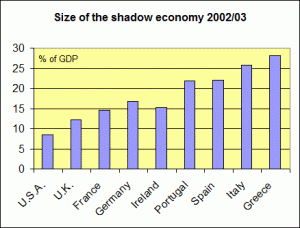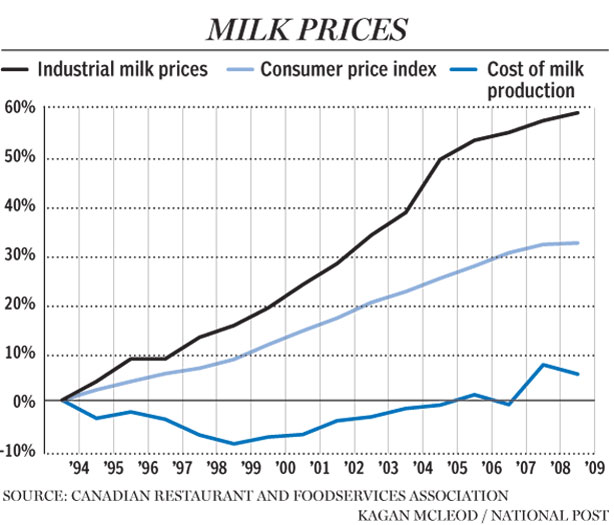One of the guys who ran Basis Yield Alpha Fund (mocked on PrefBlog on April 30 is haranguing the regulators for a crusade:
THE man who blew the whistle on Wall Street banking giant Goldman Sachs has urged Australia’s corporate watchdog to follow the lead of the US Securities and Exchange Commission in suing the investment bank for fraud.
David Mapley, a former non-executive director of the local Basis Yield Alpha Fund, said the Australian Securities & Investments Commission should closely examine the role of the investment bank’s local arm, Goldman Sachs JBWere, in marketing a mortgage-related investment product that ultimately led to the fund’s demise in August 2007.
…
He confirmed that he had approached the SEC with his concerns shortly after the decision was made to place the fund in liquidation.
…
“Myself and a colleague examined the trade and we had a strong belief that that the security was fraudulently concocted and then sold to us,” Mr Mapley said.
Maybe Mr. Mapley and his colleague should have examined the trade before plunking their clients’ money down!
BIS has released a working paper by Nikola Tarashev, Claudio Borio and Kostas Tsatsaronis titled Attributing systemic risk to individual institutions. Their conclusion supports PrefBlog’s notion of progressive capital surcharges on risk-weighted assets:
The analysis also suggests that, once risk characteristics have been controlled for, charges imposed on financial institutions would need to increase faster than their size.
but, I confess, I have not reviewed the paper in sufficient detail to determine whether the premises that lead to this conclusion are supportable.
OSFI’s Ted Price gave a speech at the Centre for Monetary and Financial Economics Conference at Carleton University titled Developments in Bank Supervision – a Canadian Perspective. Nothing new, just a reiteration of the party line. That’s one superiority of the US system of bank regulation, which is run by the Fed, which is run by a Board of Governors who are independently selected for the board by the regional banks. This means that there is not only a diversity of opinion at the table, it means that these guys’ speeches can be much more informative as they engage in public diplomacy, at least to some extent.
Quick! What’s more important – knowledge or political correctness?
“Some of Professor Katz’s controversial writings have become a distraction from the critical work of addressing the oil spill,” Stephanie Mueller, a spokeswoman for the Energy Department, said in an e-mail today. “Professor Katz will no longer be involved in the department’s efforts.”
…
While Katz’s early work focused on astrophysics, he now consults on a variety of physics puzzles, he said. Katz wrote articles on his personal website, including, “What Is Political Correctness,” “In Defense of Homophobia” and “Why Terrorism Is Important.”
…
He was fired from the panel this morning, he said. He declined to specify which articles triggered the dismissal.
Fed up with the spectacle of mere investors taking a view on economics, BaFin will introduce short-selling bans:
Germany’s BaFin financial-services regulator said that it will introduce a temporary ban on naked short-selling and naked credit-default swaps of euro-area government bonds starting at midnight.
The ban will also apply to naked short-selling in shares of 10 banks and insurers including Allianz SE and Deutsche Bank AG, BaFin said today in an e-mailed statement.
The markets instantly panicked:
Credit-default swaps soared as a move by German Chancellor Angela Merkel to ban speculation on European government bonds with the contracts sparked anxiety among investors about increasing government regulation
…
“The market sees an inadequate policy such as this as an act of desperation and a refusal to address the fundamental problems at hand,” said Brian Yelvington, head of fixed-income strategy at broker-dealer Knight Libertas LLC in Greenwich, Connecticut.Prohibiting speculation in the contracts may cause trading in the market for swaps tied to Europe government bonds to freeze up, possibly increasing borrowing costs or limiting the flow of capital, said Tim Backshall, the chief strategist at Credit Derivatives Research LLC in Walnut Creek, California.
Same thing as I always think when reading about bloggers being jailed for “disrespecting the state” or “insulting the president” (or even just cutting funding to a parade because the word “Apartheid” makes the boo-hoo-hoo brigade feel uncomfortable; geez, I wish those morons would spend less time sucking up to foreign governments and more time trying to figure out how to license a souvlaki cart in less than three years), as often happens in the Mid-east: if you have to make criticism illegal, then maybe you simply have no better answer.
The proposal backed by finance ministers at the European Council calls for fund managers to be authorized by national governments. National authorities will also review the trading activities of funds and approve their internal risk-management practices.
The SEC & CFTC have rushed out a preliminary report on the bungee jump:
At this point, we are focusing on the following working hypotheses and findings–
…
(5)
the use of market orders, stop loss market orders and stop loss limit orders that, when coupled with sharp declines in prices, for both equity and futures markets, might have contributed to market instability and a temporary breakdown in orderly trading;
…
Stop Loss Market Orders. An additional hypothesis as to why some securities suffered more severe declines than the broader market on May 6 is that they were particularly affected by stop loss market orders. These orders have stop prices that, for sell orders, are lower than current prices. When the stop price is reached, such orders turn into market orders to sell. In fast-falling market conditions, stop loss market orders could potentially trigger a chain reaction of automated selling if they are in place in significant quantity for a particular stock. We are investigating whether such a chain reaction led to abnormally large declines for some stocks on May 6.
There was continued heavy volume today, as PerpetualDiscounts edged downwards another 2bp, while FixedResets continued to impress, gaining 21bp. The Floating Rate sector continued its recent slide, so there are conflicting signals being emitted!
| HIMIPref™ Preferred Indices These values reflect the December 2008 revision of the HIMIPref™ Indices Values are provisional and are finalized monthly |
|||||||
| Index | Mean Current Yield (at bid) |
Median YTW |
Median Average Trading Value |
Median Mod Dur (YTW) |
Issues | Day’s Perf. | Index Value |
| Ratchet | 2.68 % | 2.77 % | 46,774 | 20.64 | 1 | -0.1900 % | 2,064.4 |
| FixedFloater | 5.24 % | 3.30 % | 40,147 | 19.97 | 1 | -1.6106 % | 3,056.9 |
| Floater | 2.14 % | 2.46 % | 104,241 | 21.13 | 3 | -0.0544 % | 2,266.0 |
| OpRet | 4.90 % | 3.88 % | 94,200 | 1.75 | 11 | -0.0426 % | 2,302.4 |
| SplitShare | 6.36 % | 6.30 % | 119,205 | 3.52 | 2 | 0.3523 % | 2,144.6 |
| Interest-Bearing | 0.00 % | 0.00 % | 0 | 0.00 | 0 | -0.0426 % | 2,105.4 |
| Perpetual-Premium | 5.53 % | 4.78 % | 25,081 | 15.80 | 1 | 0.0000 % | 1,823.5 |
| Perpetual-Discount | 6.33 % | 6.38 % | 215,849 | 13.33 | 77 | -0.0174 % | 1,689.4 |
| FixedReset | 5.51 % | 4.26 % | 493,756 | 3.57 | 44 | 0.2087 % | 2,150.0 |
| Performance Highlights | |||
| Issue | Index | Change | Notes |
| ELF.PR.G | Perpetual-Discount | -2.18 % | YTW SCENARIO Maturity Type : Limit Maturity Maturity Date : 2040-05-18 Maturity Price : 16.63 Evaluated at bid price : 16.63 Bid-YTW : 7.25 % |
| PWF.PR.H | Perpetual-Discount | -2.00 % | YTW SCENARIO Maturity Type : Limit Maturity Maturity Date : 2040-05-18 Maturity Price : 21.56 Evaluated at bid price : 21.56 Bid-YTW : 6.75 % |
| BAM.PR.G | FixedFloater | -1.61 % | YTW SCENARIO Maturity Type : Limit Maturity Maturity Date : 2040-05-18 Maturity Price : 25.00 Evaluated at bid price : 20.77 Bid-YTW : 3.30 % |
| W.PR.H | Perpetual-Discount | 1.15 % | YTW SCENARIO Maturity Type : Limit Maturity Maturity Date : 2040-05-18 Maturity Price : 21.05 Evaluated at bid price : 21.05 Bid-YTW : 6.63 % |
| CM.PR.K | FixedReset | 1.86 % | YTW SCENARIO Maturity Type : Call Maturity Date : 2014-08-30 Maturity Price : 25.00 Evaluated at bid price : 26.23 Bid-YTW : 4.18 % |
| ELF.PR.F | Perpetual-Discount | 1.93 % | YTW SCENARIO Maturity Type : Limit Maturity Maturity Date : 2040-05-18 Maturity Price : 19.01 Evaluated at bid price : 19.01 Bid-YTW : 7.08 % |
| PWF.PR.L | Perpetual-Discount | 2.34 % | YTW SCENARIO Maturity Type : Limit Maturity Maturity Date : 2040-05-18 Maturity Price : 19.70 Evaluated at bid price : 19.70 Bid-YTW : 6.55 % |
| Volume Highlights | |||
| Issue | Index | Shares Traded |
Notes |
| CM.PR.M | FixedReset | 84,715 | Desjardins crossed 38,900 at 27.21, then blocks of 22,000 and and 20,000 at 27.24. YTW SCENARIO Maturity Type : Call Maturity Date : 2014-08-30 Maturity Price : 25.00 Evaluated at bid price : 27.25 Bid-YTW : 4.30 % |
| HSB.PR.E | FixedReset | 55,734 | TD bought 16,700 from RBC at 16,700 at 27.25, then crossed 15,700 at the same price. RBC crossed 20,100 at the same price again. YTW SCENARIO Maturity Type : Call Maturity Date : 2014-07-30 Maturity Price : 25.00 Evaluated at bid price : 27.24 Bid-YTW : 4.54 % |
| RY.PR.L | FixedReset | 41,277 | Nesbitt crossed 16,000 at 26.30. YTW SCENARIO Maturity Type : Call Maturity Date : 2014-03-26 Maturity Price : 25.00 Evaluated at bid price : 26.25 Bid-YTW : 4.16 % |
| BAM.PR.H | OpRet | 32,706 | TD crossed 15,000 at 25.35 and 12,300 at 25.36. YTW SCENARIO Maturity Type : Soft Maturity Maturity Date : 2012-03-30 Maturity Price : 25.00 Evaluated at bid price : 25.36 Bid-YTW : 5.38 % |
| MFC.PR.D | FixedReset | 27,695 | Desjardins crossed 10,100 at 27.00. YTW SCENARIO Maturity Type : Call Maturity Date : 2014-07-19 Maturity Price : 25.00 Evaluated at bid price : 26.95 Bid-YTW : 4.44 % |
| BMO.PR.J | Perpetual-Discount | 25,955 | Desjardins crossed 15,000 at 18.63. YTW SCENARIO Maturity Type : Limit Maturity Maturity Date : 2040-05-18 Maturity Price : 18.62 Evaluated at bid price : 18.62 Bid-YTW : 6.08 % |
| There were 44 other index-included issues trading in excess of 10,000 shares. | |||

